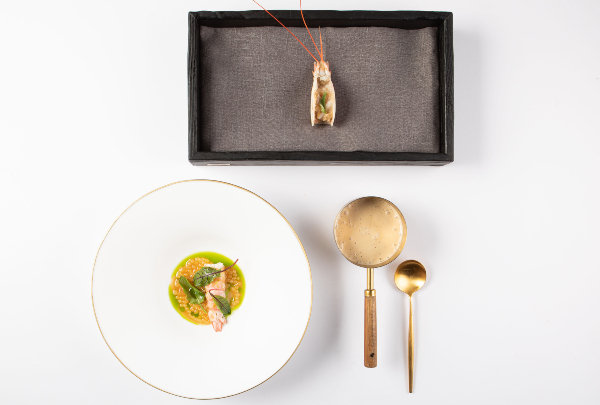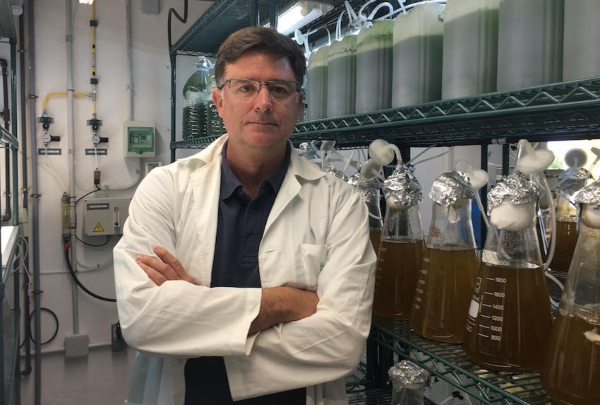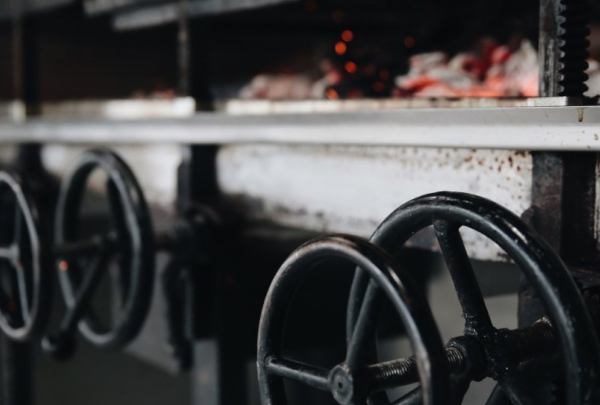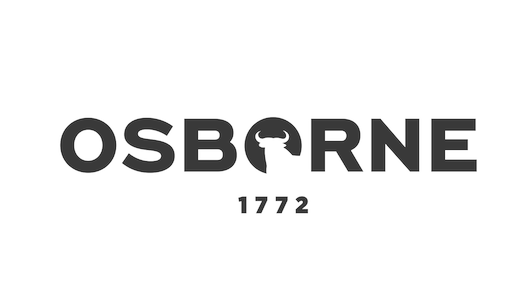Interview
What is seaweed? “It’s life, light, potential, taste, responsibility and respect”
.jpg)
Two pioneers of the collection and sale of algae in Spain are attending the 3rd Meeting of the Seas. Consuelo Guerra (Suralgas, Vejer de la Frontera, Cádiz) and Antonio Muiños (Porto-Muiños, Cerceda, A Coruña) will focus on the merits of this superior foodstuff with a seaweed-tasting session to certify its “versatility in terms of cookery and taste”, pointing out its “predominant role in the biological balance of the planet”. First, Cádiz-born Guerra and the Galician complete a questionnaire to provide a glimpse of realities.
Both admit that the seaweed business has burgeoned in recent years and that it is increasingly acknowledge as a cooking ingredient, and not only by famous chefs, although the chefs “may have created this culture”. Guerra comes from the Bay of Cádiz; Muiños, from the A Coruña cove. “There are algae in the Mediterranean too, but in smaller amounts because of high water temperatures and salinity”. Let’s take a look at one of the ingredients of the present-future of world foodstuffs. Clue: look out for the wakame salads …
You’ve been in the seaweed business for years. Have you noticed an increased interest?
Consuelo Guerra: During lockdown, private consumption rose, but only a little, along with some interest and the intention of adding seaweed to our daily diet. It might have been because people spent more time at home with more time for cooking, and the desire arose to find healthy, natural, fresh food, such as algae.
Antonio Muiños: Absolutely. I see more interest in the food industry, which sees algae as an interesting ingredient, and also among the public at large, seeking healthy food for their day-to-day cooking.
Are famous chefs more interested too?
CG: Even though I have the greatest respect for anyone who is attempting to add algae to recipes as an essential or main ingredient, there certainly has been quite a lot of work with algae by top chefs. And we’ve definitely noticed more orders from this professional segment. This also means we have to be even more demanding with ourselves, and that’s a welcome scenario.
AM: Top chefs have been some of the main groups who have opted to launch algae as an ingredient in their kitchens. The algae culture has been ushered in by their work.
How many types of algae do you work with? How many would there be on Spanish coastlines?
CG: We work with six kinds of algae (fresh algae, fresh algae in brine with natural Atlantic salt, an ecological variety from our salt flats, dehydrated), and two halophile plants (wild pickleweed and wild sea fennel – pending authorisation). On the peninsula we have quite a variety on the Atlantic and Cantabrian coasts, the southern Atlantic coast and the marshes around here in Cádiz. There are algae in the Mediterranean too, but in smaller amounts because of high water temperatures and salinity.
AM: We work with some 30 species, but there are hundreds of them to be found on the shores of the peninsula.
Are the algae on our coasts any different from, say, Japanese algae?
CG: Algae, like people, change depending on the environment they grow up in. Sea conditions in Japan have led to a large variety and abundance of seaweed, mainly large marine algae (kombu, wakame, …) in shallow waters, which makes them easier to collect, and that also brings down the eating price.
AM: Some algae are common to both coasts, while some are found on specific coastlines.
What are the qualities of algae?
CG: They have many qualities. They are extremely nutritious, low in hydrates and fats and rich in fibre, and have proteins with a high biological value, essential amino-acids which the body doesn’t produce, calcium, iron, iodine and Omega 3 and 6. There’s a never-ending list of healthy qualities, provided the algae are fresh and have not undergone too much processing. Imported algae are prone to heat dehydration, which impairs their natural status, and this affects their benefits. That’s why we’re always arguing and showing that the fresher and more natural algae are, the healthier and tastier they’ll be. They should also have no additives or colourants or preservatives so that they can be kept past their expiry date. Some Asian algae, as is the case with many wakame salads, are algae jellies, with dressing or sugary vinaigrette and sodium glutamate to make them more addictive.
AM: In addition to all that, algae provide a range of cooking options because they offer different textures and aromas. They’re extremely versatile.
Do you think ordinary people accept them?
CG: Yes, when you give them recipes and tasty formats, and if they’re easy to cook. Since we started out, our task has been to disseminate algae and encourage consumption in our wonderful, healthy, famous gastronomy, as a tasty versatile ingredient that enhances any recipe in terms of taste and aroma, and also has some excellent nutritional properties.
AM: Yes, it’s on the up and up. And we’re particularly pleased because customers are gradually adding them to their usual recipes.
Tell me three recipes you know are made with algae.
CG: Only three? I’ll give you a few more: tuna shank wrapped in sea lettuce, oven-cooked in salt; little shrimp tortillas with our Suralgas algae; fresh natural sea algae salad with prawn and squid; ceviche or raw tartare (fish or shellfish) with algae; chickpeas with langostino prawns and sea lettuce, or sea urchin roe and pickleweed scramble. Algae can also be fried as a garnish. We’ve got plenty of recipes …
AM: There are a lot of options. I’d say Galician sardine “empanada” pastie, cockles with algae, or sea bass or another fish cooked in salt with algae. Any kind of rice with algae is great too.
Now give me three culinary reasons for working with algae.
CG: Only three again? Their taste, their aroma, texture, freshness, their nutritional value, their richness and versatility in the kitchen, because they’re user-friendly and also very surprising, and because they produce different flavours and textures depending on how they’re cooked. There’s a whole world of organoleptic nuances there! In sauces, fried, cooked in foil, fresh, in salads, as fillers for “empanadas”, cooked with vegetables ...
AM: People are increasingly concerned with healthy eating, and algae are an important feature there. Their versatility means they combine very well with different dishes, either as the main ingredient or to bring out the flavour.
Finally, three sustainability reasons for cooking with algae.
CG: Sustainability depends on human beings. In other words, it’s us who turn something natural into something industrial. At Suralgas we are great believers in this philosophy: "Quality produce, collection, selection and manual, artisan, ecological processing”. All our products start and end with a pair of hands, and so we’re in constant contact with algae, knowing what we choose and what we pass on to our customers.
AM: Algae play a major role in the biological balance of the planet. It’s been like that for millions of years, and so an enormous responsibility is necessary to collect, cultivate and use them.
Talking of cultivation, how much does it cost?
CG: We don’t cultivate it – we just collect it from locations where it grows naturally.
AM: It depends on the area and the type of algae. There’s a large amount of variability. Some years you might not collect anything at all. Years ago in Galicia we learnt to work and grow at the pace dictated by nature.
Describe what seaweed is in a sentence.
CG: It’s the maximum expression of life. It’s salt, light, energy, colour, taste, aroma, freshness, beauty, sheen and flesh.
AM: To think about algae is thinking about passion, life, respect, responsibility, taste, effort …
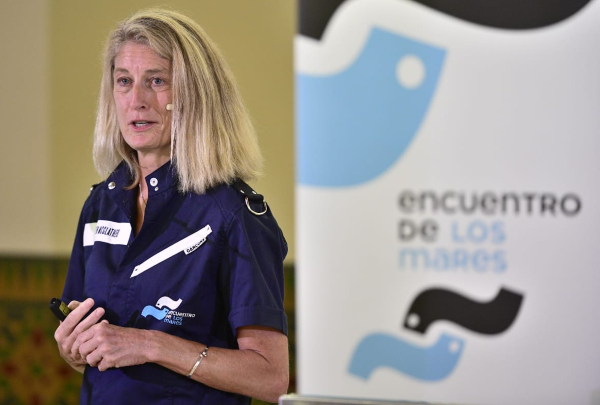
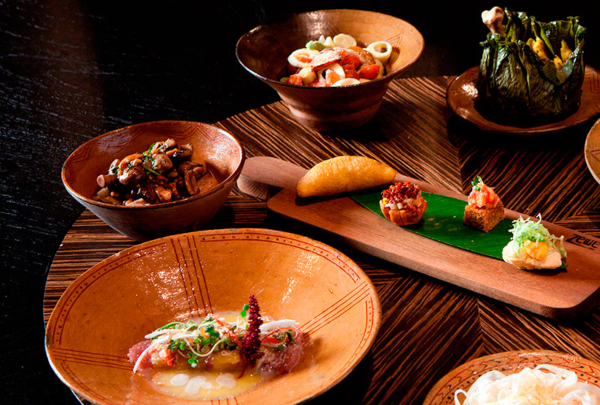
 600x405 (1).jpg)
